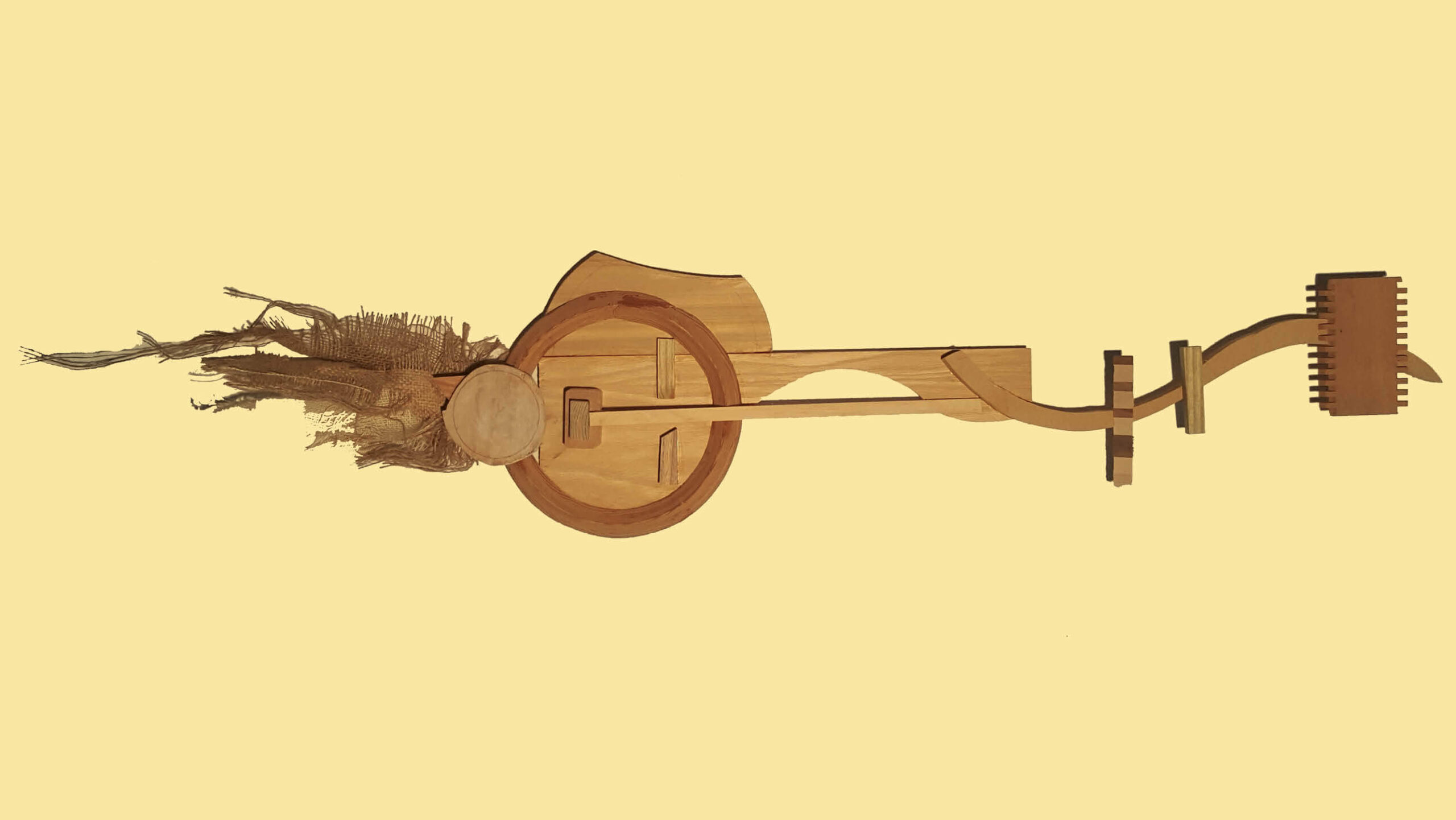
Najjar Abdul-Musawwir – Deep Roots: From Africa to America

On view at Artspace 304 from June 10-July 22 is Deep Roots: From Africa to America, by Najjar Abdul-Musawwir. The exhibition revolves around the banjo as an object symbolizing Africa’s presence in America. For Abdul-Musawwir, a Professor of Fine Arts, the idea of valuing the banjo as an artifact of historic importance in present culture arose in discussions with students while teaching the African-American Art History course at SIUC. The sculptural works in Deep Roots: From Africa to America celebrate the banjo as one of Africa’s major contributions to American culture and music. The exhibition will have a closing reception on Friday, July 22 from 5-7 pm.
Artist Statement by Najjar Abdul-Musawwir
Professor of Fine Arts, Southern Illinois University School of Art and Design
“The deeper the roots, the taller the tree. The more you know about history, the more you can see into the future.”
-Dr. Johnnette B. Cole
Why do we value the artifacts or creative objects of the past in our culture or in any culture? Is it that artifacts provide evidence of our purpose through our human contributions? What does the past tell us about the present mindset? How does visual language convey what we do or do not understand? These are some of the questions raised in response to my university students’ discussion on Henry Ossawa Tanner’s painting, The Banjo Lesson, 1893. Our discussion focused on how the banjo facilitated a learning moment for the young boy and the old man. The image also revealed a learning moment for us, and viewers, as well. My interest in the banjo as an object symbolizing Africa’s presence in America was stimulated in the spring semester of 2000 during a discussion with my students in my African-American art history course. When I asked my students about the banjo depicted in this famous 19th century painting by Tanner, the reply was, “It is a southern white hillbilly musical instrument.” At this pivotal point, I realized in a more profound way that the banjo was an object of historical importance, identifying this instrument as one of Africa’s major contributions to American culture. I shared with my students what Thomas Jefferson wrote in 1781 and what Joseph E. Holloway, and Winifred K. Vass, discussed in The African Heritage of American English (Indiana University Press, 1993) more than 200 years later: “The instrument proper to them [African American] is the Banjar, brought from Africa, and which is the [form] of the guitar, its chords being precisely the four lower chords of the guitar.’

